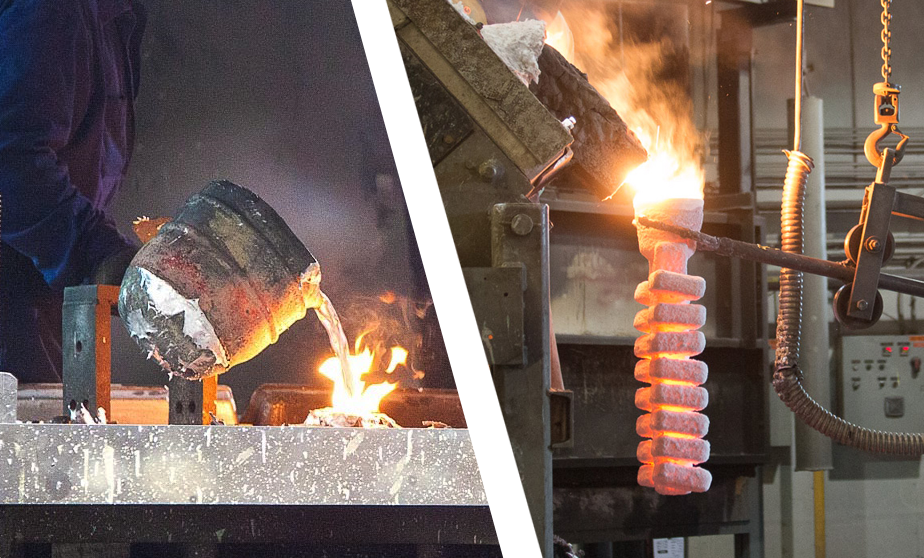The Best Strategy To Use For Stahl Specialty Company
The Best Strategy To Use For Stahl Specialty Company
Blog Article
Get This Report on Stahl Specialty Company
Table of ContentsThe Stahl Specialty Company IdeasThe Stahl Specialty Company DiariesGet This Report on Stahl Specialty CompanySome Ideas on Stahl Specialty Company You Should KnowHow Stahl Specialty Company can Save You Time, Stress, and Money.
The subtle difference depends on the chemical web content. Chemical Comparison of Cast Light weight aluminum Alloys Silicon promotes castability by decreasing the alloy's melting temperature and improving fluidity during spreading. It plays an essential duty in enabling elaborate molds to be loaded accurately. In addition, silicon adds to the alloy's strength and wear resistance, making it useful in applications where resilience is essential, such as automotive components and engine parts.It likewise enhances the machinability of the alloy, making it much easier to refine into completed items. In this way, iron adds to the overall workability of light weight aluminum alloys. Copper boosts electrical conductivity, making it helpful in electrical applications. It also improves deterioration resistance and contributes to the alloy's general strength.
Manganese adds to the stamina of light weight aluminum alloys and enhances workability. It is frequently utilized in functioned aluminum products like sheets, extrusions, and accounts. The presence of manganese help in the alloy's formability and resistance to fracturing throughout manufacture procedures. Magnesium is a lightweight aspect that provides stamina and impact resistance to aluminum alloys.
It allows the production of lightweight components with superb mechanical properties. Zinc improves the castability of light weight aluminum alloys and helps control the solidification process throughout spreading. It boosts the alloy's strength and hardness. It is often located in applications where complex forms and great information are essential, such as attractive spreadings and particular vehicle parts.
An Unbiased View of Stahl Specialty Company
Because aluminum-silicon alloys have good casting residential or commercial properties, high gas homes, basic processes, and superb deterioration resistance, aluminum-silicon alloys are most frequently used in the die-casting sector at home and abroad. At the very same time, aluminum-silicon alloys are also fairly early and widely acknowledged alloys created and used in die-casting. After continuous research and enhancement, the majority of the present worldwide mainstream aluminum-silicon alloys have actually been settled and are nothing more than A356, A360, A380, ADC12, B390, and A413.
The main thermal conductivity, tensile stamina, return strength, and elongation differ. Among the above alloys, A356 has the greatest thermal conductivity, and A380 and ADC12 have the cheapest.

The Facts About Stahl Specialty Company Revealed
In precision casting, 6063 is fit for applications where complex geometries and high-grade surface coatings are paramount. Instances consist of telecommunication enclosures, where the alloy's remarkable formability enables sleek and aesthetically pleasing styles while keeping structural stability. In the Illumination Solutions sector, precision-cast 6063 elements produce classy and efficient lights fixtures that require elaborate forms and excellent thermal efficiency.
(https://medium.com/@franceshoward64061/about)
The A360 displays superior prolongation, making it suitable for facility and thin-walled parts. In accuracy spreading applications, A360 is appropriate for markets such as Customer Electronic Devices, Telecommunication, and Power Tools.

In accuracy spreading, aluminum 413 shines in the Customer Electronics and Power Devices sectors. It's typically utilized to craft complex parts like smart device housings, cam bodies, and power tool cases. Its accuracy is impressive, with limited resistances up to 0.01 mm, guaranteeing remarkable product setting up. This alloy's exceptional rust resistance makes it an exceptional selection for outdoor applications, making certain lasting, long lasting items in the mentioned markets.
Stahl Specialty Company Fundamentals Explained
As soon as you have actually chosen that the aluminum die casting procedure is suitable for your task, a vital following step is choosing the most suitable alloy. The aluminum alloy you choose will significantly influence both the casting process and the residential or commercial properties of the final item. Due to this, you need to make your decision meticulously and take an informed technique.
Figuring out the most suitable light weight aluminum alloy for your application will indicate weighing a vast array of attributes. These relative alloy characteristics adhere to the North American Pass Away Spreading Association's guidelines, and we've separated them right into 2 categories. Aluminum Castings. The first category addresses alloy features that affect the manufacturing procedure. The 2nd covers features impacting the residential properties of the end product.
The alloy you pick for die spreading directly influences several facets of the casting process, like just how easy the alloy is to deal with and if it is susceptible to casting defects. Hot cracking, additionally called solidification cracking, is a normal die casting flaw for light weight aluminum alloys that can result in interior or surface-level splits or cracks.
The Ultimate Guide To Stahl Specialty Company
Particular aluminum alloys are more susceptible to hot cracking than others, and your selection should consider this. aluminum metal casting. It can harm both the actors and the die, so you need to look for alloys with high anti-soldering properties.
Corrosion resistance, which is currently a notable characteristic of aluminum, this content can differ substantially from alloy to alloy and is a vital characteristic to think about depending on the ecological conditions your item will be exposed to. Put on resistance is an additional property commonly looked for in aluminum items and can separate some alloys.
Report this page